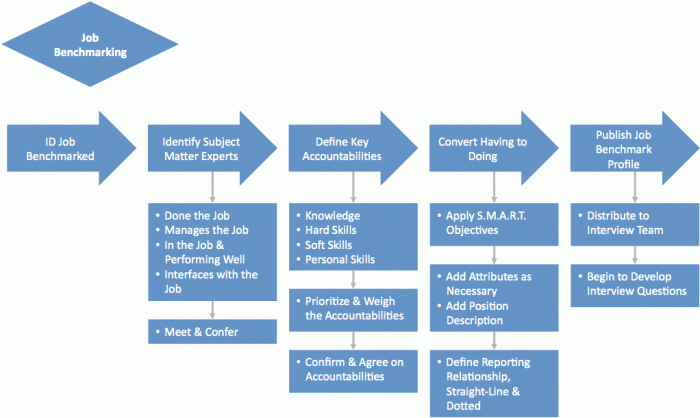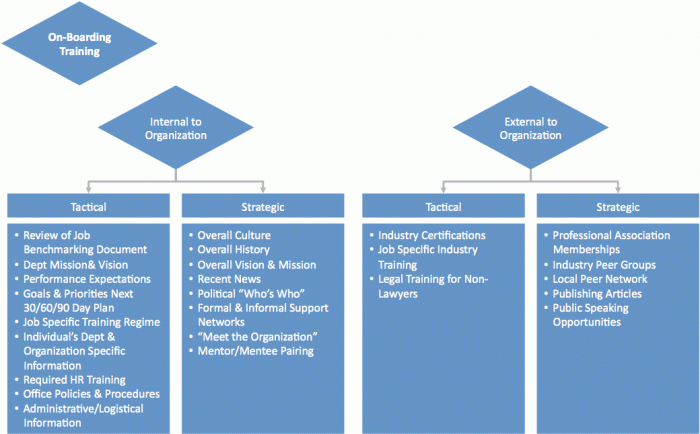Overview of Talent Acquisition Process
Needs Assessment Phase
The basis for solid business decisions is through analysis of the need and scope of a business need. An assessment involves the series of questions that should be raised, vetted and answered to that an open need can be fulfilled in an way that is efficient, effective and on point. A well defined position starts by addressing the strategic and/or tactical nature of a role and by identifying the overall objectives that a position is expected to fill. Ultimately a new or changing role is a business unit is thoroughly described in a Position Description that serves to set expectations and measure success.
Job Benchmarking Phase
Businesses, of any size, can ill afford to see their best people leave, let alone resort to the same old hiring practices that have failed to consistently yield a compelling return on investment. By creating a Job Benchmarking Process, you will able to define primary performance objectives a candidate is required to achieve, create commitment and accountability and be able to hold employees accountable. This now becomes an effective Recruitment and Performance Management tool.
Talent Acquisition Strategy Phase
Employers today are ill prepared for meeting/interviewing potential candidates for an open role. Lack of understanding the requirements and disorganization regarding the roles of each “Interviewer” can lead to missed opportunities of top talent and negative branding of a business. By defining the Talent Acquisition Process, you will successfully get confirmation and accountability of all active participants, have consistency in managing the process, prepare all involved and keep timelines for forward movement of the process.
Interviewing & Selection Phase
Inconsistencies in the interviewing process can lead to missed opportunities of top talent or hiring the wrong person for the role. Too much time in between interviews and unclear decisions can leave the talent pool hesitant to join the team. By developing an Interview & Selection Process, you will be able to hold Hiring Managers/Decision Makers accountable in filling open positions within a specific timeline, eliminate doubt where each candidate stands in the interview process and successfully promote the Firm/Company due to organization and interview workflow amongst potential candidates.
On-Boarding Training Phase
Ongoing Retention Phase
Are you doing enough to keep your high potential employees or will you allow your competition to poach them? As companies have completed their restructuring efforts and the economy has started to show signs of improvement, many organizations may be in danger of losing their key employees due to treatment they perceived as toxic during the recession. Recent studies from Deloitte and Aberdeen Research have predicted that as many as 50% of employees in organizations have indicated that they will look for other employment when the economy improves. As part of a total Talent Management Strategy, all organizations need to pay attention to developing, growing and retaining key employees that will allow them to benefit from the economic recovery. Here are some initial steps to think about.








